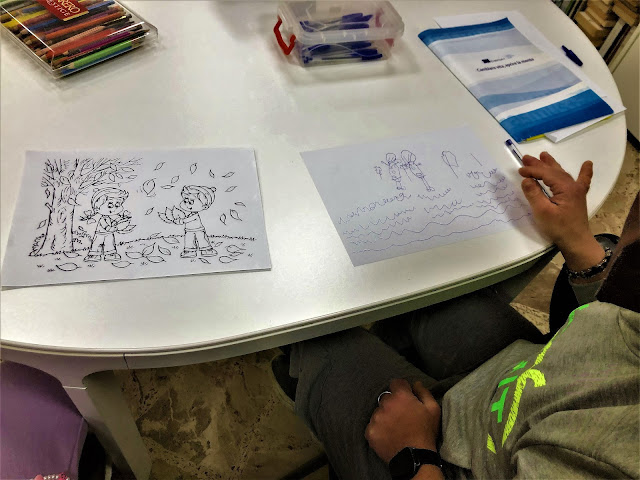During the months of February and April we created workshops based on the guidelines
"How to structure learning sessions on communication" developed at the beginning of the project to support the work of social workers in structuring learning activities on communication.
Most of these tools have been very useful in stimulating active thinking and reflection on the theme of how we communicate. We started our workshops exactly with this question: How do we communicate?
The use of practical exercises such as a simple Let’s be silent for 3 minutes, has allowed us to access a new awareness: as Paul Watzlawick says, men cannot fail to communicate.
Then we explored all the human possibilities of communication: verbal and non-verbal, formal and non-formal, through brainstorming and role playing. These tools proved to be valuable allies for the development of communication skills and surprised the participants. Among the games we have done, there are:
- The collective portrait, an exercise that involves the transition from non-verbal communication, as you have to observe the other and draw it in detail, to verbal communication, since at the end of the portrait you had to interview each other to find out more about who they had drawn. This tool is very illustrative of reality: we know with all the sense organs and we can communicate both through our eyes and through our voice.
- The game Did you receive my fax? and Speaker and illustrator had many similarities: in both it was necessary that there was a fluid and clear communication in the group, the first game, however, explored non-verbal communication, in fact our participants had to invent a coded language made of gestures that was accessible to everyone and the second encouraged the passage of verbalized information by voice. We were surprised to find that all participants were able to communicate better non-verbally than verbally. Very often, we are unclear in expressing what we want to know and this becomes a limit in completing sufficiently satisfactory results.
- Even more exemplary was the game Walk in which it was very important to pay attention to the instructions given by the facilitator, which could create confusion and precisely misunderstandings: this allowed us to deepen the communication full of ambiguities that often generates conflict.
- The last game that led us to the conclusion of this path was Make me...: a game in whichthe participants divided into teams had to complete tasks. Here, it was the participantsthemselves who had to give clear instructions and it was very fun to see how sometimeswe are convinced that we have given effective information and in reality we have not beenclear at all.
This series of games inspired us and we continued in the following weeks to talk about communication and conflict, making sure that everyone could improve their skills even more and giving even more space to the issues that emerged thanks to these guidelines.
Some photos of the workshops:





Comments
Post a Comment